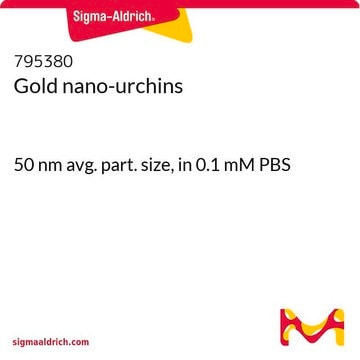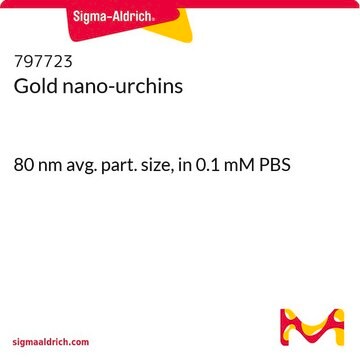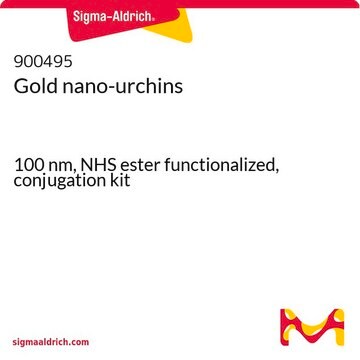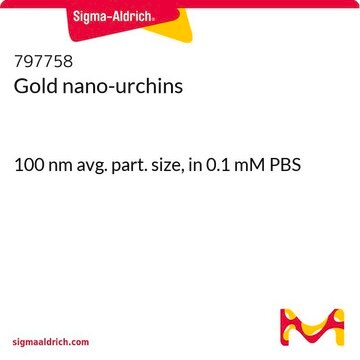797707
Gold nano-urchins
90 nm avg. part. size, in 0.1 mM PBS
Synonim(y):
Gold nano-urchins, Gold nanoparticles, Non-functionalized gold nanoparticles
About This Item
Polecane produkty
opis
Particles:∼5.37E+9/mL
Postać
liquid
nanourchin
OD
1
Średnica
90 nm
śr. rozm. cząst.
90 nm
λmaks.
630 nm
temp. przechowywania
2-8°C
Szukasz podobnych produktów? Odwiedź Przewodnik dotyczący porównywania produktów
Zastosowanie
Kod klasy składowania
12 - Non Combustible Liquids
Klasa zagrożenia wodnego (WGK)
nwg
Temperatura zapłonu (°F)
Not applicable
Temperatura zapłonu (°C)
Not applicable
Certyfikaty analizy (CoA)
Poszukaj Certyfikaty analizy (CoA), wpisując numer partii/serii produktów. Numery serii i partii można znaleźć na etykiecie produktu po słowach „seria” lub „partia”.
Masz już ten produkt?
Dokumenty związane z niedawno zakupionymi produktami zostały zamieszczone w Bibliotece dokumentów.
Produkty
Biomaterials science integrates smart materials into biological research, requiring a deep understanding of biological systems.
Nasz zespół naukowców ma doświadczenie we wszystkich obszarach badań, w tym w naukach przyrodniczych, materiałoznawstwie, syntezie chemicznej, chromatografii, analityce i wielu innych dziedzinach.
Skontaktuj się z zespołem ds. pomocy technicznej




